The Consumer Electronics Show (CES) always brings to mind flying cars, drones, flat screens, and stuff you never thought you’d want or need. Exhibit A in that regard this year is an electric razor that can also become an electric toothbrush—and, no, we aren’t kidding. But CES became a proving zone for carmakers long before the big EV push. Now it’s all about electrification and, even more so, autonomous cars that will drive you around rather than be driven.
The farther out a concept is from actually hitting the streets, the more you should take what you see here with a grain of salt—or a bucketful or two. That said, this is a deadly earnest endeavor, no matter how much these concepts might seem insanely fanciful. The industry is shifting radically, and even if phase-changing cartoon paint or gaming zones in cabins feels impossible, you can bet it’s not. That feature just might not be hitting your dealer tomorrow. Not that you have to take any of this car tech too seriously. As has always been the case, the name of the game with CES is that it’s a show. So sit back, grab some popcorn, and enjoy the wheels of the future.
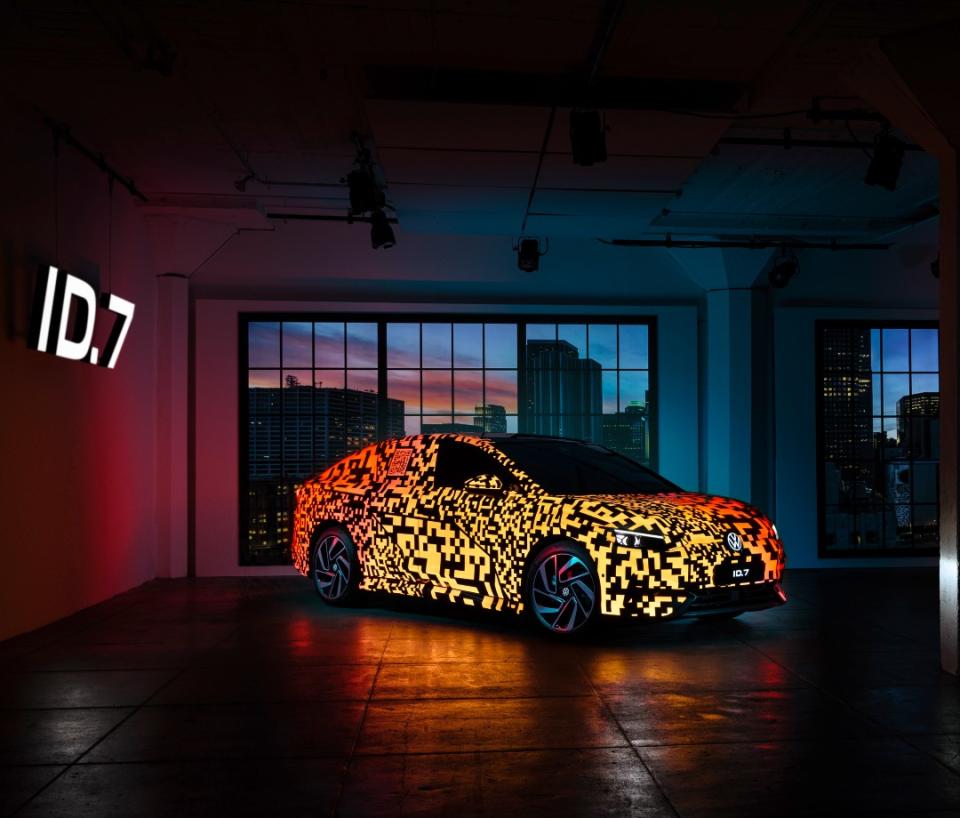
2024 Volkswagen ID.7 Sedan
If you think this is an EV replacement for VW’s current Jetta gas sedan, guess again. It’s much larger than that, and with a 116-inch wheelbase, possibly at least as roomy as the current ID.4 hatchback that Volkswagen already sells.
VW also promises the ID.7 will roll very far between charges, though American buyers will want to watch the range digits carefully. VW announced up to 700 kilometers of juice for European models (434 miles), but usually EU standards are way more optimistic than U.S. tests prove out. Still, if VW cracks the all-important 300-mile mark on most versions of the ID.7, that will keep up with the Teslas, Kias, etc.
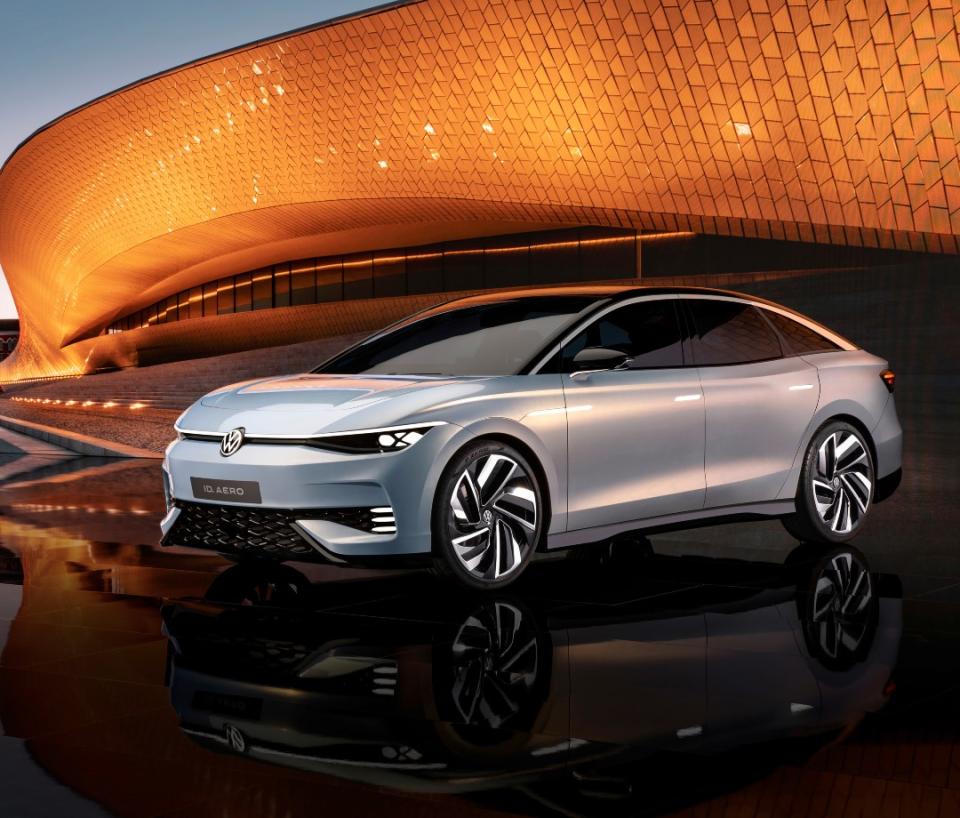
Late last year VW revealed the Chinese version of this car, the ID.6, and it gives you a better idea of what it looks like than the camouflage ID.7 at CES, which has electroluminescent paint that can “dance” to a soundtrack, lighting up with the beat—but that’s strictly a show-car head fake. VW is promising a highly digital cabin, with Alexa/Google/Siri-like voice activation of key functions, from entertainment to climate.
Available late 2023; MSRP $40,000 (estimate)
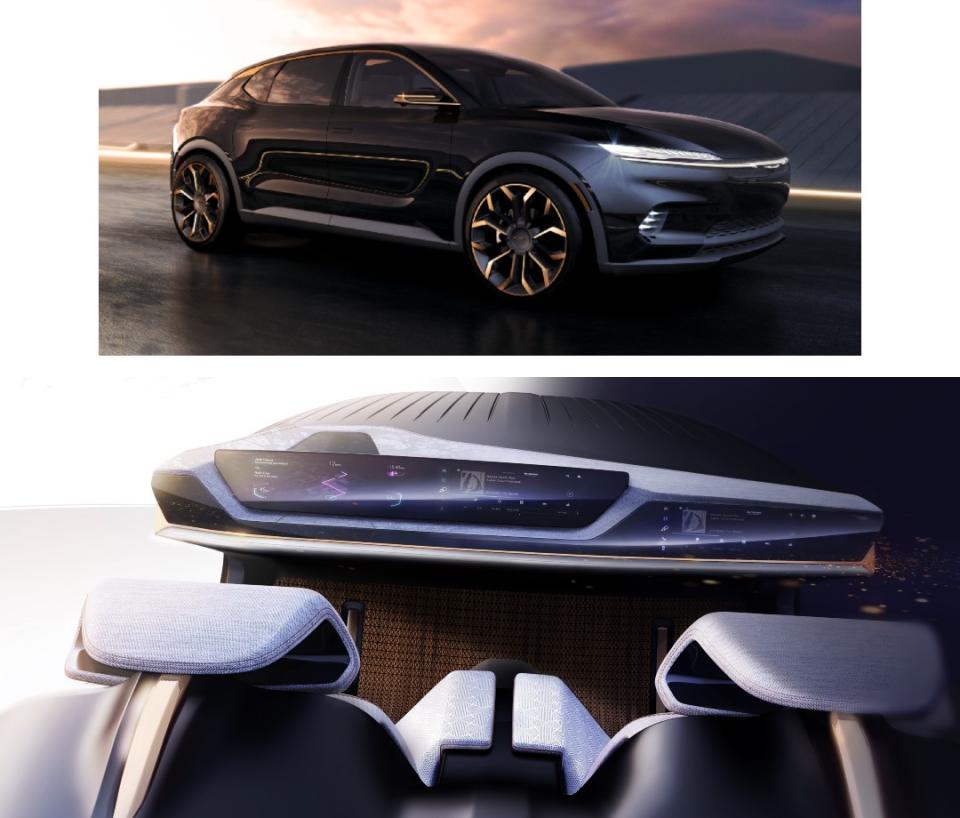
Chrysler Synthesis Smart Cockpit
Think of this loosely “Chrysler” space-age cockpit as the kind of thing that might debut in any machine that’s under Stellantis ownership (Jeep, Ram, Fiat, Alfa Romeo, Maserati), or be incorporated into the Airflow, a concept EV that promises to be part of the rebirth of Chrysler that Stellantis plans to begin next year.
Regardless, much like you’re seeing as a general CES theme, this STLA Smart Cockpit includes more screens and fewer buttons. Voice control will take over, and Chrysler is emphasizing integration with scheduling software and smart infrastructure—so that everything from your 10:30 Zoom call to surfacing available charging networks will seamlessly be beamed to the car. Yes, that video conference would stream in, as long as the vehicle could run in autonomous mode. That’s a very big TBD, since no brand is green-lighting their cars to run entirely without driver inputs as of yet—and streaming video in the front seat will surely hit regulatory stoplights without full autonomy.
Some of the promise of this cabin is feasible right now. For instance, much like Volvo and Polestar as well as Land Rover, Chrysler says these quarters would be free of all chrome and other tanning agents and other icky chemicals, and that the instrument panel would be made from post-industrial plastics and ocean plastics. This is a trend we’re already seeing in the fashion and workout space. What your gym tracksuit won’t have, that this concept does, is a responsibly harvested walnut floor.
Available late 2025; model TBD
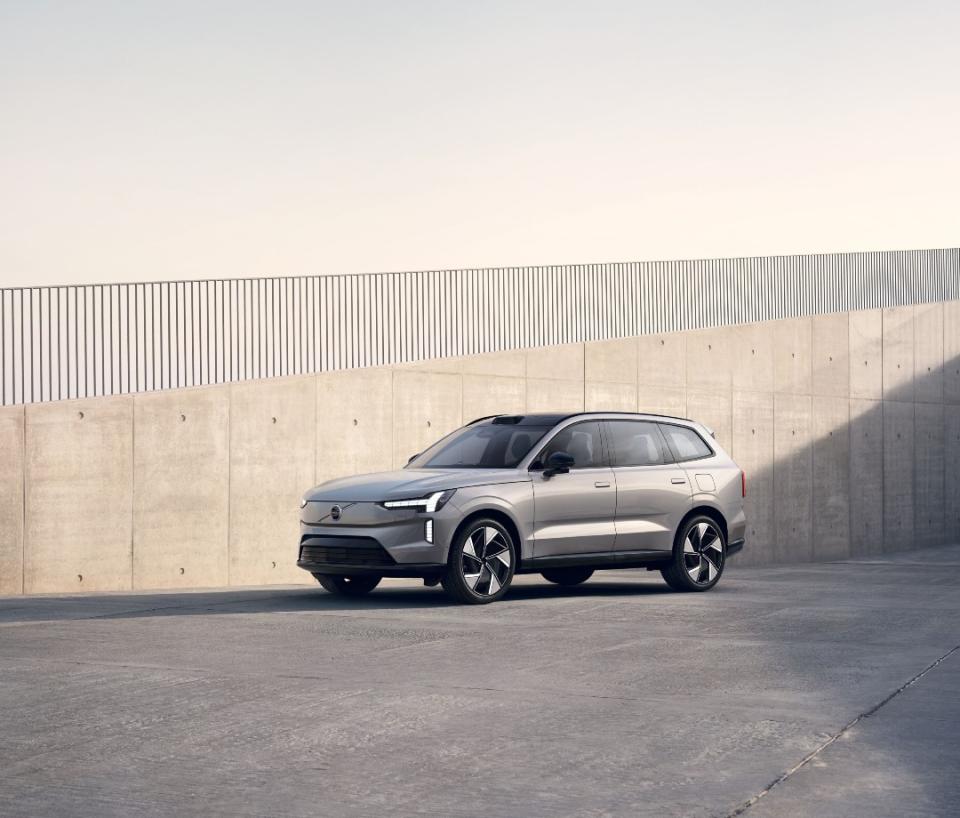
Volvo EX90
Don’t be fooled: This is not a six-passenger XC90. It’s Volvo’s entirely new 2024 EX90, and the flagship of Volvo’s all-electric lineup. Volvo, a longtime leader on safety, and more recently on superb interior and exterior design, may not have been as quick to take up the mantle of electrification as, oh, Tesla, but as a relatively small carmaker they’re jumping as quickly as they can toward making only EVs. The EX90 will be an AWD luxury rig almost surely as covet-worthy as the extant XC90.
That formula starts with safety, naturally, and the EX90 will come standard with multiple laser, radar, lidar, visual, and sound sensors, all to aid the driver and help the vehicle stay on course or avoid accidents. Volvo says its lidar sensor can see 800 meters down the road, ID’ing if an object is a human or animal to be avoided, a stalled car, or other hazard. Years ago, Volvo demonstrated high-tech driver monitoring, and even the ability to steer a car to safety if a driver becomes incapacitated. You’ll likely see that capability come to life in the EX90.
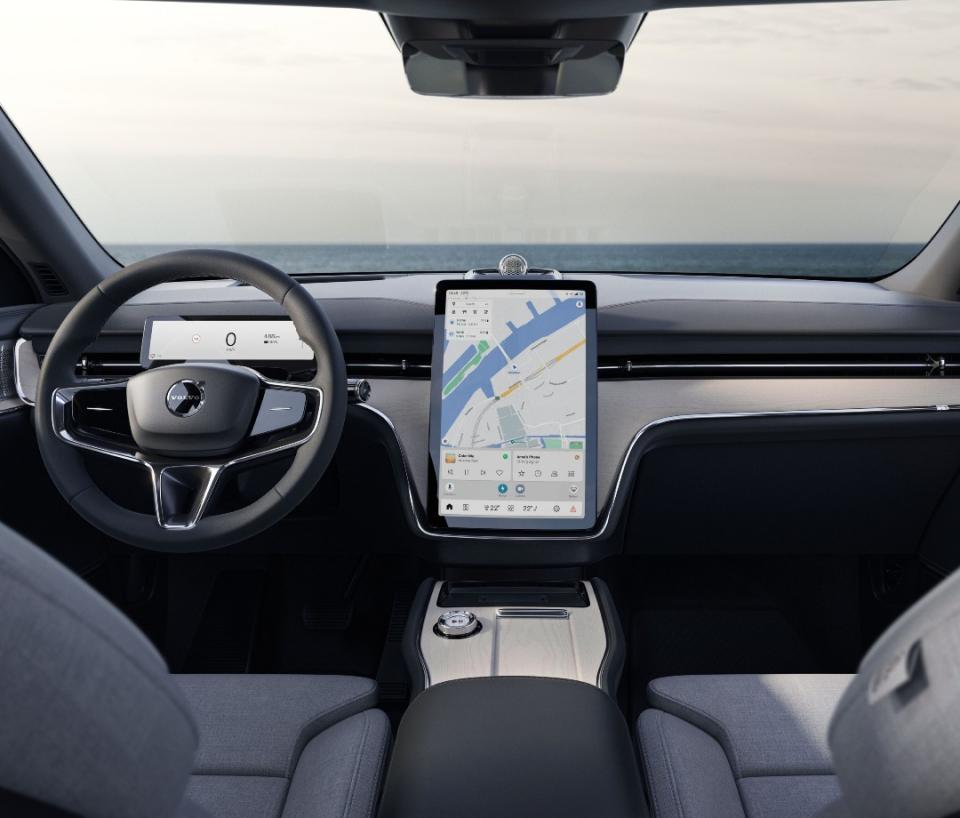
In addition, Volvo has worked very closely with Google on in-car tech, which the carmaker says will reach a yet higher tier with Google voice, mapping, apps, and navigation all standard. The EX90 only comes with AWD, with either a 402 or 496 horsepower version. Either way, range should exceed 300 miles, thanks to a 111-kWh battery which can refuel with DC fast charging from 10 to 80 percent in 30 minutes. While 5G comes standard, you might want to upgrade to the Bowers & Wilkins audio system with 25 speakers because, obviously, it’s going to sound amazing.
Available late 2023 with pre-order available now; MSRP $80,000
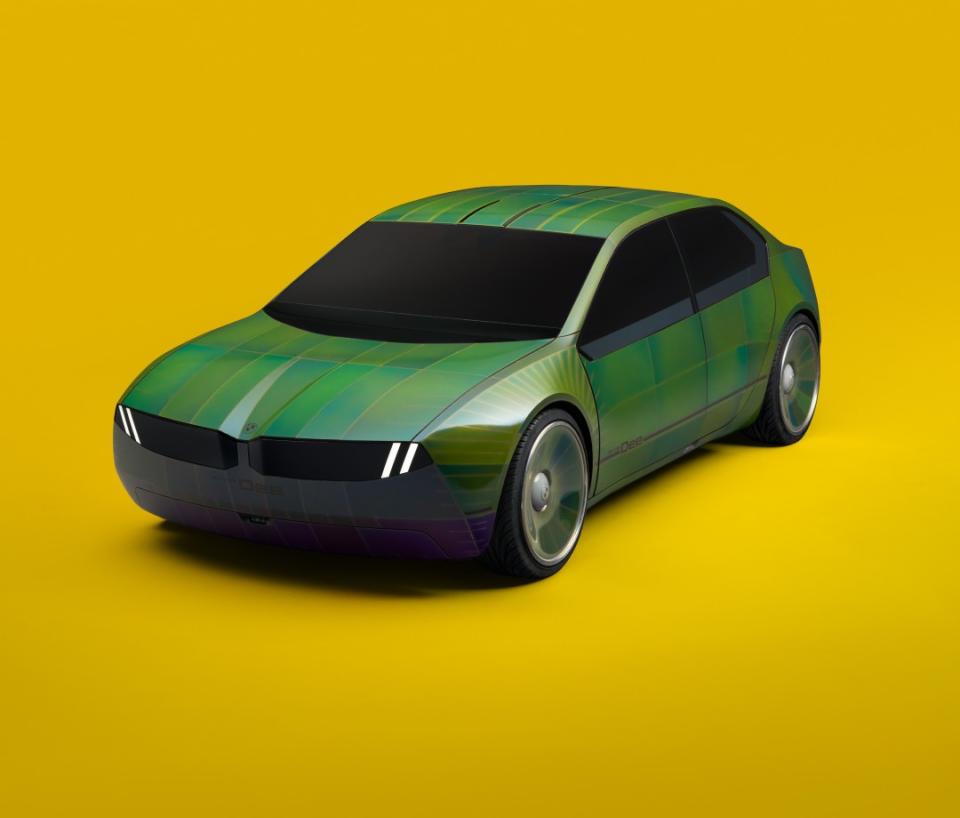
BMW i-Vision Digital Emotional Experience (DEE) Compact Concept Car
Volkswagen may be using a camouflage scheme to disguise the ID.7, but BMW seems serious about (eventually) selling a car with a constantly changeable surface. Last year at CES, they showed a concept called the iX Flow Featuring E Ink that had a digital surface which could morph from black to white. The BMW i Vision Dee allows customers to swap between 32 outfits, and also to do so in various suites or combos (more animation than any fixed hue) and to include light and sound effects. The idea is that especially as autonomy becomes more common, cars will also need to communicate beyond, say, turn signals, and carmakers are working toward a visual language that can tell pedestrians they’ve been identified and it’s safe to cross the street, for example. BMW also says this concept will be able to express emotion—such as (we’re not making this up) “joy, astonishment or approval.” You’ll have to decide if you want your car to become a Star Wars droid. Maybe?
From a pure customer perspective, what’s compelling about this concept, too, is that it’s a smaller BMW with classic German sports sedan strengths. BMW says this simplified surfacing would allow the animated graphics to take center stage, but fans of BMW’s history might say less body creasing and more honest expression would be welcome from a brand with such great heritage.
Inside, the concept car is using AR and expanding the virtual reality and mixed display potential of the car’s cabin space, using the entire windshield for head’s-up projection, and even the side windows to show content. While interesting, and certainly projected displays will increasingly become normalized (and we’ll eventually get away from the massive physical display trend started by Tesla), don’t forget that what’s possible isn’t always scalable at cost. But a small 2-series-sized EV that hearkens to the vaunted 2002 or even a late 1990s M3? Yes, please!
Availability and price TBD
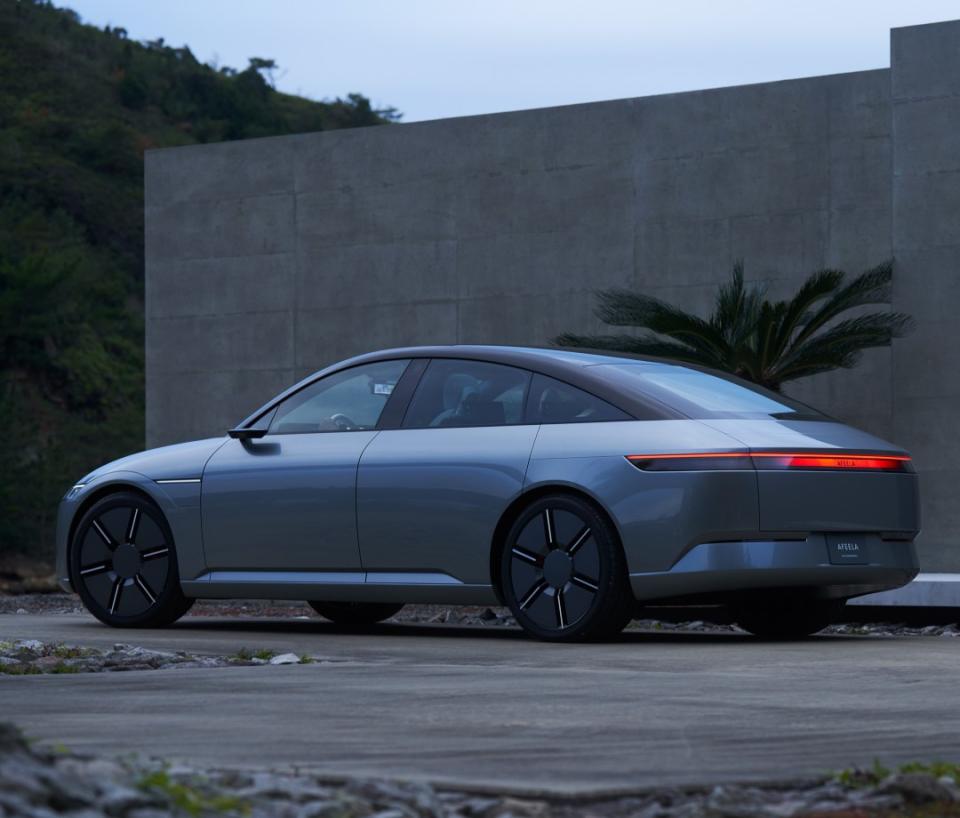
Sony-Honda Afeela
While it seems odd, Sony has been working on a car idea since well before 2020—and by 2022 it became clear that the company needed a partner on the actual car-making side. Enter Honda. The new, co-produced brand—called Afeela—has Sony taking the reins on camera and sensing tech (the EV concept you see here is said to have 45 cameras and sensors both inside and out) and Honda leading on safety features and, of course, actually car manufacturing. This marriage, claim the new Afeela brand leaders, will create a car with level 3 autonomy—basically, nearly driverless on the highway—and highly assisted when driving in cities.
Sony will also lead on the computational side, and has a vested (and seasoned) interest here, too—since the PlayStation producers say that they will transform the car into (what else?) a gaming space.
What you’re starting to see emerge is automakers realizing that when driving becomes autonomous it also becomes… well, beside the point. And when that happens, brands will need other distinguishing characteristics. Speaking of which, Sony, with the Afeela, also says that their cars will use augmented reality and nearly surround-view screens and displays—a lot like what you’re seeing with other carmakers displaying futuristic wares at CES. And what does Honda get in the deal? Well, they own Acura (their upscale label), but here they get a third brand—one that could both trickle tech into Acura and Honda cars and also be both more niche and more coveted. That feels very smart indeed.
Available late 2025, MSRP $50,000-$60,000 (estimate)
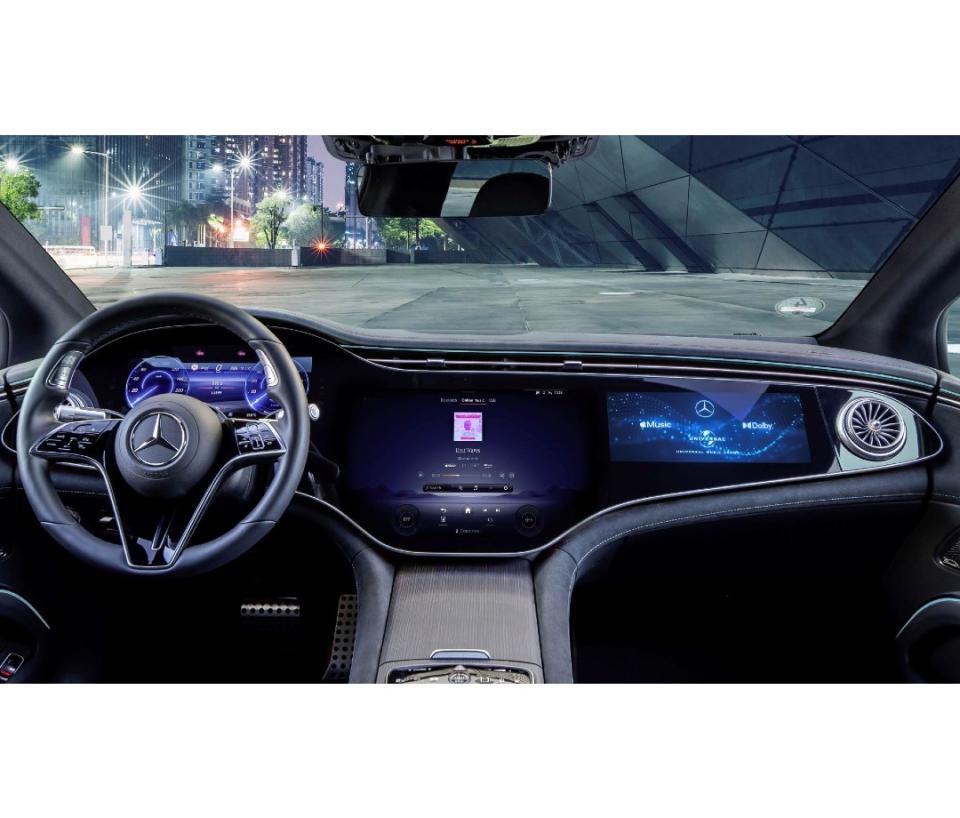
Mercedes Immersive Audio Streaming
This past fall Mercedes-Benz debuted a soft launch of a partnership with Apple and Universal Music. The idea, put as simply as possible, is that satellite radio sucks—it’s sending even the most pristine, remastered, sonorous tunes through one of those straws that comes with a kid’s juice box. That’s silly, because with 5G, you can stream HD, and at times, even 4K video.
Mercedes’s partnership with Apple (they own the rights to streaming) makes sense—but, until now, Apple’s Spatial Audio was only available on Apple devices. That changes in this deal where now anyone with an Apple Music account and certain Mercedes models gets that playback experience behind the wheel. The Universal partnership adds another layer, where especially back-catalog audio will be remastered specifically on behalf of Mercedes owners—for the carmaker’s systems, for optimal quality—well beyond a run-of-the mill mix. Plus, Universal will have access to Mercedes cars for specific, Dolby Atmos mixes that will utilize the cars’ software so that the music gets a specific soundstage effect in Mercedes-Benz cars.
And that’s not the end. A Silicon Valley/Munich-based company called ZYNC will handle live concerts and sports events, streaming both audio and video specifically for in-Mercedes consumption. You’ll have to be parked for the video to play in the front seats (a lot of higher-tier Benzes have monitors in the second row, naturally). But even if you’re on the move, the front-seat passengers would be able to hear the audio portion of any concert/event/game.
If you’re wondering—why now?—this latter concept has to do with, yes, 5G, but also a wise understanding on Mercedes’ part that we’re inching closer to autonomous driving. Inking these deals now lets them lock up relationships while it’s easier. Also, naturally, you’ll need a specific Mercedes account to handle billing. While these services will be free for the first year, you didn’t think there was zero profit angle in all of this, did you?
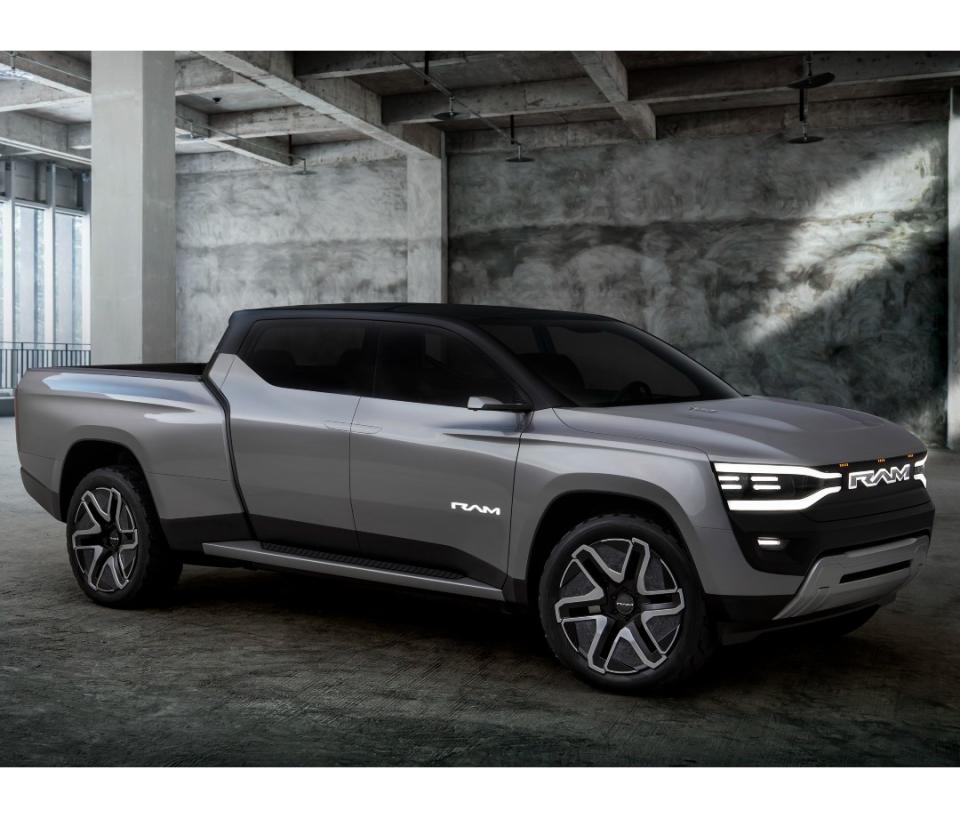
Ram 1500 Revolution BEV Concept
There’s something to be said about being last to the party. By that we mean Ram’s EV pickup—which goes on sale in 2024—comes after both Ford’s Lightning will have been on sale for nearly two years and Chevy’s Silverado EV will have been on the road for nearly one. That’s also well after upstart Rivian. However, the style of this concept is definitely breathtaking in many ways, and if some of the promised features actually arrive, it’ll be a game-changing vehicle. For starters, bi-fold side doors actually make a lot of sense in a truck, when you want to get to the stuff stored in the second row more easily. Plus, with battery vehicles, the entire floor structure is extra supportive, so theoretically Ram can make a truck that’s stiff enough to have this massive opening at the side.
The pass-through idea is also unique: Ram says loads as long as 18 feet could be carried with an extended bed and, say, two-by-fours entering the cabin through the rear opening. That mid-gate (door behind the cabin) can also be mounted with jumpseats, a clever feature for tailgating. And while some features, like illuminated hubs on the wheels and 35-inch tires, are probably show-car-only features, an entirely clear roof might not be. Options like a convertible workstation folding out of the center console also makes perfect sense, as does being able to remove the passenger screen and use it as a tablet, plus rear seats that fold into a bed or swivel like captain’s chairs.
We also dig the idea of a smart rearview mirror that takes feeds from all the vehicle’s various camera angles and stitches them into a wider backup view (vs. seeing that on the center stack screen). Another nifty idea that’s probably technologically possible with a lot of cars already is what Ram calls Shadow Mode, where you could move the truck to a different spot on a job or campsite using voice prompts to reorient it a few feet as you walk it to a new location. Automated parking is already feasible and standard in lots of cars.
Ram says it might also equip owners with their own app that could be very useful at a big box store where you might scan something like a tool box to see if it fits in your truck, or a load of lumber. You’d scan the dimensions, then the app would suggest ideal loading positioning. Onboard projectors in the truck would holographically display the target location and how to stack the object(s) via augmented reality.
While Ram didn’t release range targets or any specs, they are targeting up to 800-volt DC fast charging at up to 350 kW, which would match or best rivals in the space.
Available late 2023, MSRP $50,000 (estimate)
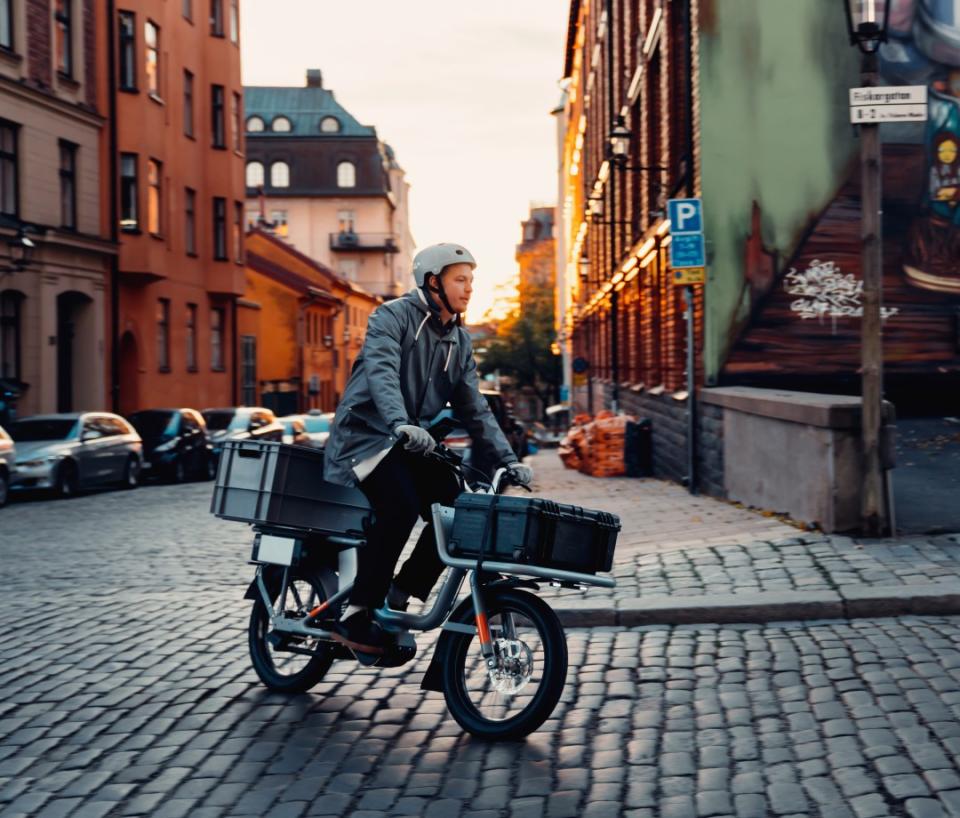
Cake Åik Electric Cargo Bike
Cake has made electric motos for a few years now, like the Makka, which we reviewed a while back. The issue? The Makka, with a top speed just shy of 30mph, is a wee slow as a moped—but if you added pedals to that same platform you’d have an awesome cargo bicycle. How awesome? Try (not a typo) 224 miles of range and the ability to haul 441 pounds. The setup is designed to allow the use of a single battery, for over 70 miles of range, or to carry as many as three, for maximal range. The batteries can also be used to power electric tools and other charge devices.
Cake says the bike’s motor will deliver a constant output of 500 watts and maximum pulses up to 1,000—which in our testing of other cargo rigs sounds more than adequate. They’re also including throttle assistance, which is crucial for a laden machine like this to get moving from a standstill. Plus, they’ll sell racks, child seats, and other options to go with the $6,470 Åik.